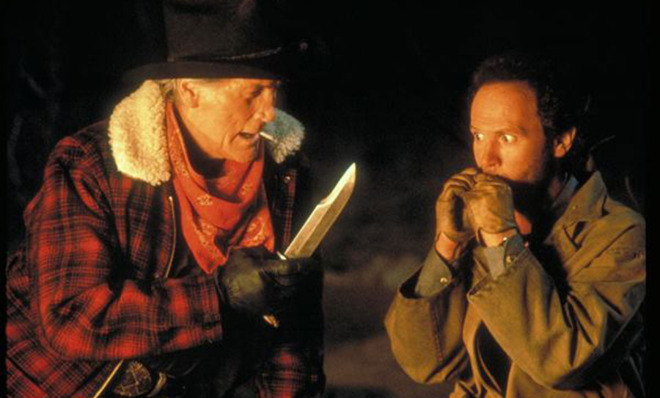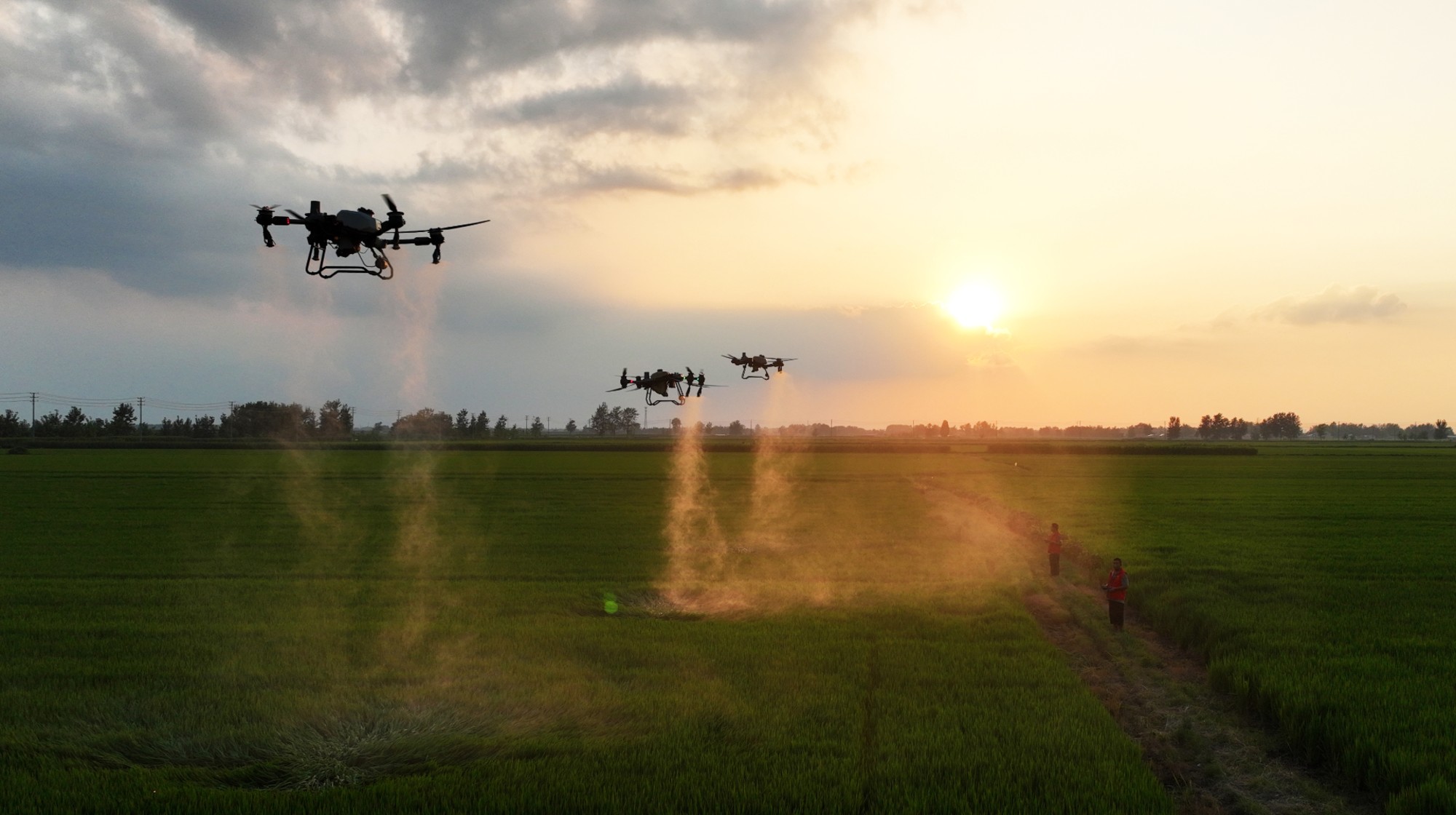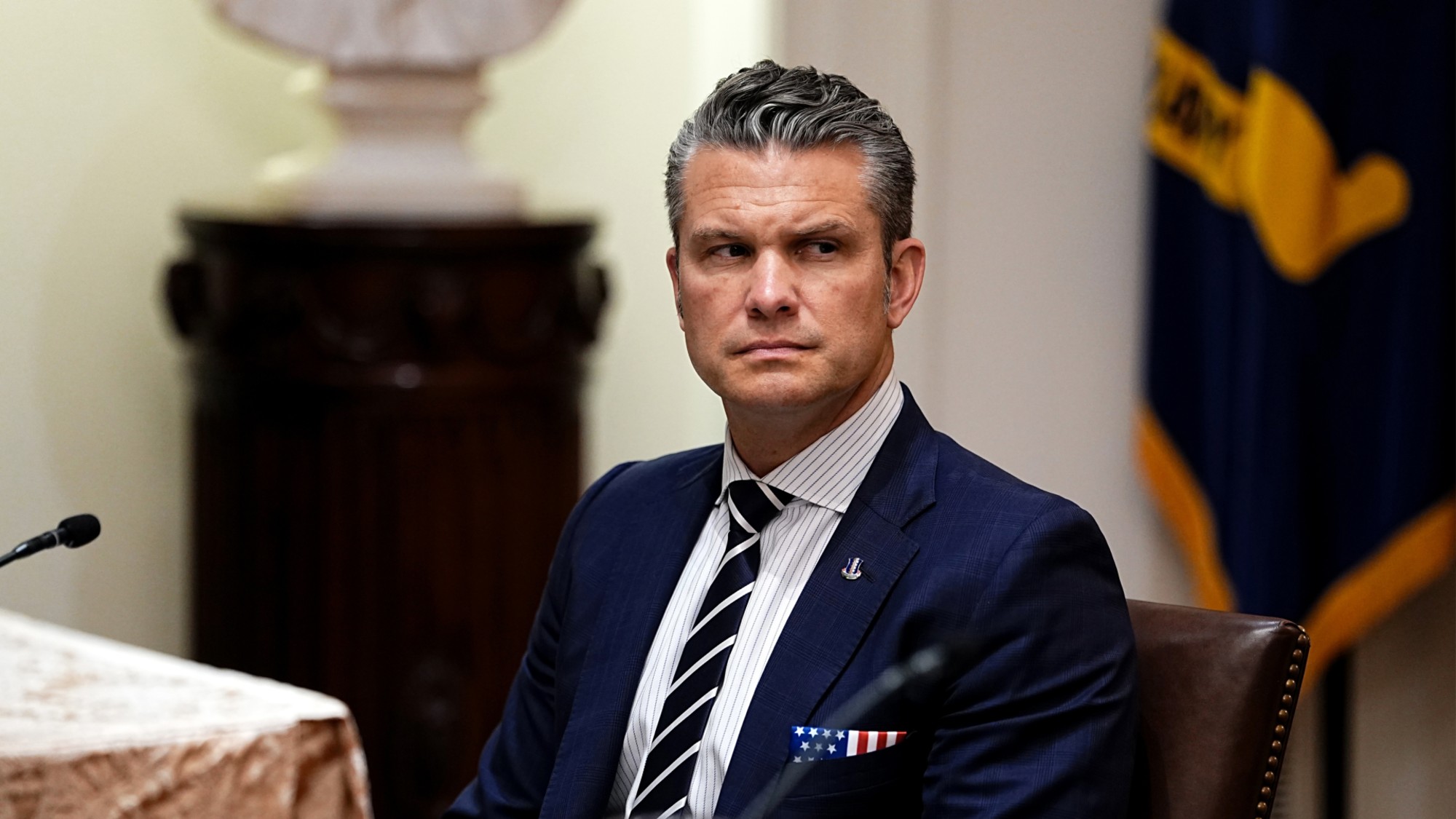Behind the scenes of City Slickers
Rick Moranis was lined up to play Phil. And Charles Bronson turned down the role of Curly.

TRAINING TO BE a cowboy for City Slickers brought about a bizarre case of déjà vu. In 1975, my wife, Janice, and I had made our first trip to California. We knew that at some point we might move there, so it was sort of a scouting trip. One day while driving through Joshua Tree National Monument, I pulled over because I was having a strange anxiety attack. The Western landscape suddenly looked very familiar. I had the strongest feeling that I had been there before. Specifically, the feeling was that I'd once been a cowboy and had ridden this same territory, not in a rental car but on horseback. "It's not a pleasant feeling," I said to Janice. "I know this place."
Okay, stop muttering "Bulls---." This is exactly how it happened. It threw me for a few days because, let's be honest, there weren't many Jewish cowboys. Growing up, you never saw Hopalong Chassidy.
So 15 years later, when we were writing the script and creating the river chase where Mitch ropes Norman the calf, who was swept away in the rapids, Lowell Ganz, the writer, asked, "Can you do that?"
The Week
Escape your echo chamber. Get the facts behind the news, plus analysis from multiple perspectives.

Sign up for The Week's Free Newsletters
From our morning news briefing to a weekly Good News Newsletter, get the best of The Week delivered directly to your inbox.
From our morning news briefing to a weekly Good News Newsletter, get the best of The Week delivered directly to your inbox.
"Yeah, I can do that," I answered. I don't know why I said that—I hadn't been on a horse since I was 9 years old. When we started training on horseback, I took to it very quickly. One day we were working on roping a steer from a galloping horse, the first step in learning how to do it for the river sequence, and sure enough I chased the sprinting steer holding the reins in one hand and twirling my lariat like the rodeo boys do with the other. When the steer was in range, I threw the rope, and damn if it didn't go right around the steer's neck. I pulled the horse up and jumped off and tied the steer up.
THE THREE "SLICKERS" had to be unlikely cowboys, everyday men who are thrust into a tough situation. Bruno Kirby would play Ed, a pudgy sporting goods salesman, and Rick Moranis was set to play Phil, the introverted, henpecked supermarket manager. The role of Curly, the old cowpoke who would lead this motley crew, was the plum role in the picture. Jack Palance was our only choice. The first movie I had ever seen was Shane, where Jack played Wilson, the bad guy who gets it in the end. I never forgot how scary he was.
Ron Underwood, our terrific director, set up a meeting with the man himself at the bar at the Hotel Bel-Air. We arrived early, and when Jack walked in, we were both a little starstruck at first. His large head was the perfect finish to his long, athletic body. He had a certain natural spookiness to him, and as we talked I could see that he loved to play on it. He was very well read, smart, and, in a word, classy. He loved the script and wanted to do it, but he had a scheduling conflict with another film and wasn't sure it was going to work out. We were crushed, and since shooting was to begin shortly, we needed a backup. With a 24-hour window facing us, we secretly reached out to another icon, Charles Bronson. His agent assured us that he would read the script right away. The thought of Bronson in this role was in its own way very appealing. He was an intense actor—scary, of course—and would make a tough and hilarious Curly. The next day I was told to be at my office at a certain time as Mr. Bronson would be calling me. I sat by the phone, nervous about talking to him. The phone rang.
"Hello," I said cheerfully.
A free daily email with the biggest news stories of the day – and the best features from TheWeek.com
"F--- you," he replied. I waited for the punch line. There wasn't one.
"F--- you. I'm dead on page sixty-four! How dare you send this to me."
I wasn't sure if he was joking or not.
"You have a lot of nerve," he went on. "I don't die in my films." I was about to remind him that he died in The Magnificent Seven, but before I could, he said it again: "F--- you."
"Mr. Bronson, I'm sorry you feel this way. It's a great part."
"No, it's not—I'm dead on page sixty-f---ing-four." And he hung up.
I sat there, stunned, and then the phone rang and it was Jack's agent saying he'd blown off the other film because he wanted to do this one, and we were home safe.
WE WENT INTO full rehearsal, and then tragedy struck Rick Moranis. His wife had been diagnosed with a serious illness, and he had to leave the film. Danny Stern came on to play Phil, and the three of us made perfect sense together. Bruno was the unlikely pudgy tough guy, and Danny the tall and timid Phil. He arrived the day before shooting started and never had time to train on his horse.
Dean Semler was our director of photography. He'd won an Oscar for Dances With Wolves, but his first love was comedy. Many of the scenes we had to film were very -challenging—most shots had a few hundred cows in them, and our real heroes were the cowboy wranglers, who kept the cows in frame. Our stunt coordinator, Mickey Gilbert, had been Robert Redford's stuntman in Butch Cassidy and the Sundance Kid, and he designed every shot with Ron Underwood to make the action look real and, at times, dangerous.
And it didn't just look dangerous: For the river crossing, Danny, Bruno, and I actually brought 450 head of cattle down a muddy hillside and into and across the swiftly moving river. Huge fire hoses and giant fans simulated a rainstorm and pelted us with water from above. Nets had been set up downriver from bank to bank, to catch any animals or actors that might get pulled away by the current. In the scene, Norman the calf would get swept away from the herd and I would ride along the riverbank and heroically rope him, only to take a fall into the surging river myself and then go after him when he got caught in the swirling rapids. My stuntman, Brian Burrows, did the majority of the white-water-rapids work, but I got in there as well. The water was 52 degrees, and I wore a wet suit under my clothes. Mickey kept telling me to pee in my wet suit when I got cold: "Remember, pee is 92 degrees."
After we'd shot for five weeks, Jack joined us for two weeks. We were a well-oiled machine by the time "the Big Cat," as we called him, arrived. The crew was as excited as I was about his arrival. When Jack, dressed all in black, arrived on the set, everyone applauded. Jack's first shot was to confront a ranch hand who was making lewd remarks to Helen Slater's character. He would rope the dude around the neck and then enter the corral and confront him and me, which would start our relationship. Ron, who is a gentle, sweet man, easily mistaken for a puppeteer, softly explained to Jack what he wanted: "Then you come through the gate and see Billy and give him a glare—"
Jack pounced: "What the f--- does that mean, give him a glare? I don't glare, I'm a f---ing actor—tell me what I'm thinking, not what I'm doing!" Things had been going swimmingly, and now "the Big Cat" apparently had a thorn in his paw. I quieted Jack down, and Ron apologized to Jack as best he could.
"Let's just f---ing do this!" Jack yelled.
"ACTION!" Jack got off his horse, walked through the gate, and gave me a glare like a laser beam that went through my head and burned a hole in the fence behind me. "CUT, PRINT!" said Ron. It was a lesson to us all. Jack knew what he was doing, he knew who he was, and he needed to be talked to in a certain way. After that day, Jack and I were alone for 10 days shooting all of our scenes together, including the one where we birth Norman, our little calf. That scene is one of the most talked about in the film. I'm asked all the time what it was like to birth a calf, because it looked so real. Our special effects crew created the rear section of a cow. It was a perfect anatomical replica, complete with "lungs" that would breathe as a cow in distress would. They covered a few-days-old runt calf in realistic bloody jelly and folded the little guy up, and I pulled him out of the faux birth canal. He must have been thinking, 'Didn't I just get out of here?' It was a lovely moment between Jack and me.
FOR A CRUSTY, sometimes intimidating man, Jack was actually a very sensitive guy. He understood how to act on film better than anyone I had worked with up to that point. He knew how to hold the frame. More than anything, he knew that the size of his head was a powerful instrument. Jack found the right way to hold his big head, and Dean Semler understood exactly how to light him. He also was a poignant figure to me. Curly was meant to be the last of the cowboys, and Jack, at this stage of his life and career, embodied that idea of a dying breed. He had trouble remembering his lines at times. I would watch him rehearsing his words with his wife, and I would walk over and say I was having trouble with the scene and would he mind going over it with me. He labored some days to get his 70-year-old body onto his horse for all the hours we had to be in the saddle. He never complained. On the night we finished shooting Jack's work in the film, I asked him, "Why did you go so crazy that day? Why did you yell at Ron like that and carry on?"
He looked at me and simply said in that gravelly voice, "It was my first day. I always get nervous on the first day."
"How many movies have you made?" I asked.
"Counting the s--- I did in Europe? About 300."
"And you still get nervous?" I asked incredulously.
"Only on the first day," he replied.
The Golden Globes honored us with several nominations, including Best Comedy, Best Supporting Actor for Jack, and Best Actor in a Comedy for me. We were sitting together when Jack won. I was elated—this meant he had a real shot at the Oscar. He made a short speech and came back to the table.
"Jack, you're supposed to go to the press room," I told him.
"No way—I'm gonna be here when you win."
I was very moved, but then shortly thereafter I lost. Instantly, Jack got up to leave. "Where are you going?" I asked him.
"The press room—you lost."
Excerpted from Still Foolin' 'Em: Where I've Been, Where I'm Going, and Where the Hell Are My Keys? by Billy Crystal, published in September 2013 by Henry Holt and Company, LLC. ©2013 by Billy Crystal. All rights reserved.
-
 Looming drone ban has some farm-state Republicans anxious
Looming drone ban has some farm-state Republicans anxiousIN THE SPOTLIGHT As congressional China-hawks work to limit commercial drone sales from Beijing, a growing number of conservative lawmakers are sounding an agricultural alarm
-
 Mind-expanding podcasts you may have missed this fall
Mind-expanding podcasts you may have missed this fallThe Week Recommends True crime, a book club and a therapeutic outlet led this season’s best podcasts
-
 ‘It’s critical that Congress get involved’
‘It’s critical that Congress get involved’Instant Opinion Opinion, comment and editorials of the day